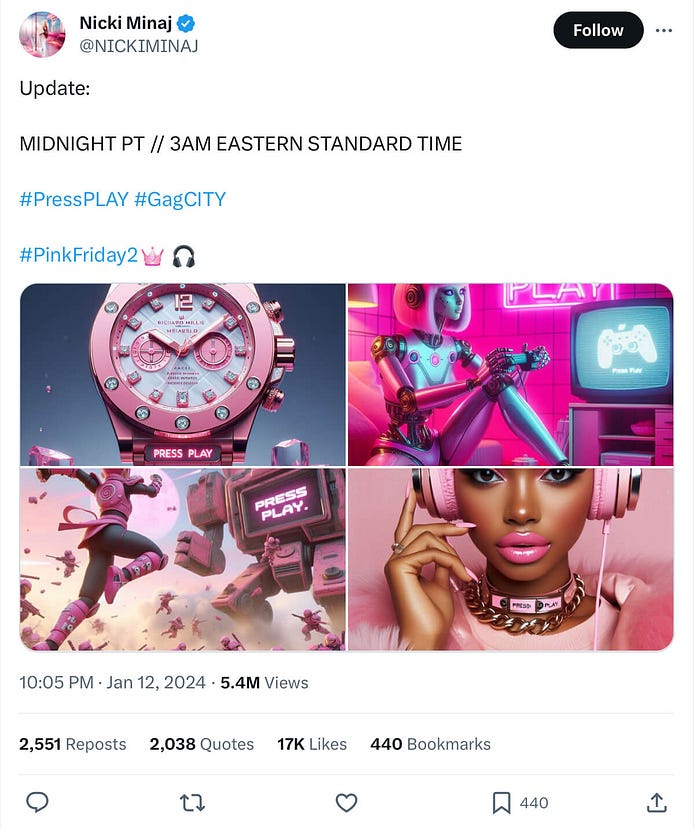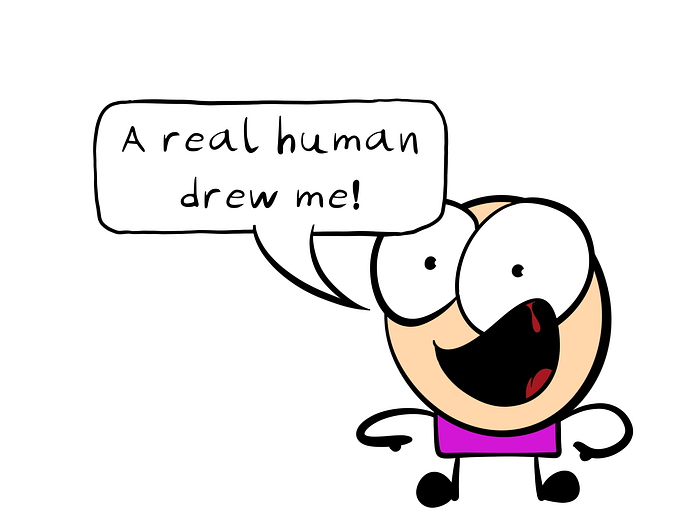The first few months after generative AI became available to the public, it was cool and impressive — impressive enough to make a flounder sit up and take notice. The masses hadn't yet seen a computer spit out text and images that until then only humans could produce. So our jaws dropped.
But we quickly picked our jaws up again.
And now? Now AI-generated art and text are rapidly devolving into the equivalent of a plastic crown and scepter bought at the dollar store.
Let me explain.
On what we perceive as impressive
The ancient Egyptian pharaoh Ramses II became a large peppered jerky through an embalming process that involved mummification and having precious peppercorns thrust up his nostrils. Emperor Napoleon III supposedly kept his prized set of aluminum knives and forks for special guests only, while regular guests (and his mother-in-law?) were snubbed by getting only silver cutlery. And the color purple used to be called royal purple or imperial purple because only kings and emperors could afford it.
This shows you that something as common as aluminum, pepper, and a simple color were once so expensive that only heads of state who talked about themselves in the third person could afford it. Likewise, encyclopedias, sugar, furniture, cinnamon, glass, ice, and tea were all things that were unaffordable to a peasant but that now every Joe Schmoe has access to.
So while in the past only kings could afford to sit on an aluminum throne and drink an ice-cold sugary drink out of a glass cup while gobbling up a meal covered in salt and pepper, none of that would nowadays make you whiff of royalty. You're probably just sitting in a cheap chair at McDonald's having a McPepper, French fries, and a Coke.
Likewise, AI art has quickly devolved from an extravagant item to junk food — from "Hey! This is so cool, impressive, and amazing!" to "This is cheap, lazy, and I'm sick of it."
And why did this shift happen? Easy. Because what we find impressive is what's rare. And AI-generated content has become far from rare.
But it gets worse…
AI-generated content is for spammers and scammers now
Here, look at what happened when celebrity rap queen Nicki Minaj posted these AI-generated images on Twitter:

Yes, she got some likes, which isn't that hard if you have over 28M followers. But more interestingly are the comments she got:
- "These random ai generated pics"
- "the ai girl ur so lazy 😭R😭R😭R/>quot;
- "Not AI again"
- "Imagine earning millions of dollars weekly/monthly and use AI generated images. This is really pathetic, lol."
- "Don't u have money to hire an artist Nicki?"
- "Looks like garbage. Pathetic."
- "More AI art…"
As with everything that used to be hard, but has become easy to produce, AI content now comes across as trashy and something you as an artist and creative want to stay away from.
Here's how Ryan Broderick—who regularly writes about Internet culture—put it:
Why would anyone need to make a lot of low-effort digital content? Who is the actual person that would ever need to generate hundreds of meaningless JPGs? Why not just draw or commission one good image or video instead of asking a machine to fart out a hundred terrible ones? But I actually think we're beginning to finally get an answer: The only real use case for AI art is flooding social media with a bunch of worthless garbage. And the only reason to do that is to advertise something or scam people. Who are the folks who are going to flood the Internet with AI art? It's scammers, spammers, and lazy people who can't be bothered to do something original themselves.
So the problem with AI isn't that it's going to steal your job. The problem is that if you use it as a replacement for the work you should be doing, your work is going to be perceived as a cheap commodity at best — and spammy, scammy, or lazy garbage at worst.
Don't be a button pusher
The person who presses a button to fire up the machine that injects molten plastic into molds to create plastic knives and forks isn't a craftsman. He's a button pusher. And so are the people who turn on the automated machinery that mass produces IKEA furniture, cheap pottery, and printed paperbacks.
But skilled artisans and craftsmen still exist. You can still find a blacksmith, carpenter, shoemaker, bookbinder, or tailor. It's just that you have to pay them a whole lot more for their products when compared to what you would have to pay for the equivalent products produced by the button pushers.
And that's why artisans and craftsmen are rare these days. Most customers are not willing to pay the premium for handcrafted items. After all, they just want a shoe, knife, or shelf and don't care about how it was produced. What matters to them is how much it costs. And this is so because these are necessity goods.
But art, whether it's visual or written, is different. Art isn't a necessity in our daily lives, but something we want to enjoy. And much of the enjoyment comes from the fact that a human did it.
That's why people still prefer paintings over printed posters, why they prefer watching two humans compete in a chess tournament instead of watching two computers face off against each other, why we pay extra for live music even though we all have portable music players in our pockets, and why we still go to live theaters and opera houses or stop and watch the street performer instead of just consuming everything on YouTube. There is just something about knowing that a human did it — even though they might have done it "worse" than a machine.
"Worse," however, is entirely the wrong word. When something comes from a human, we don't want perfection. Small mistakes and idiosyncrasies actually add to the value. Why? Because they create uniqueness and make it clear that it is a human who did it.
So, again, the real danger of AI isn't that it'll take away your job as a writer and artist. It's that it tempts you to become a lazy button pusher who mass produces content—content that looks cheap and soulless.
Want more fun illustrated essays on writing? Then subscribe to my newsletter that's all about online writing!


